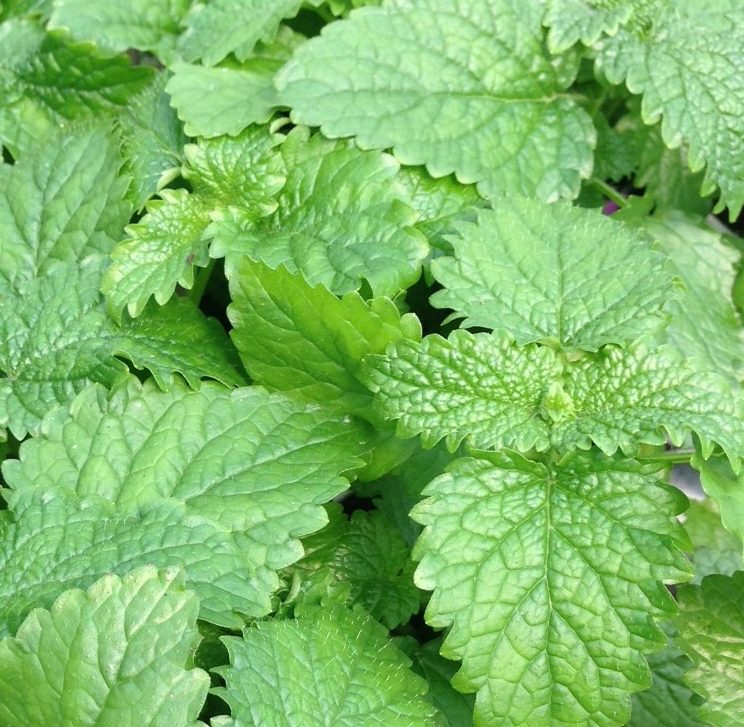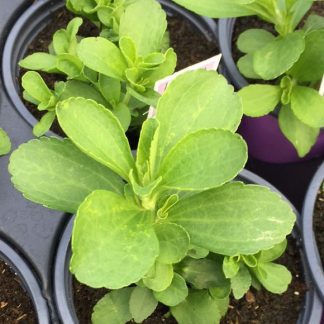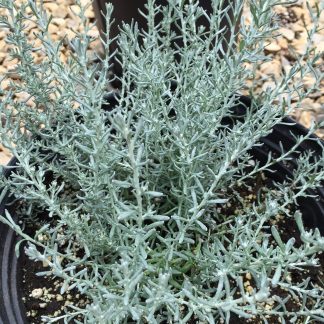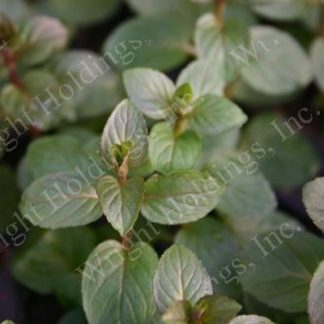Description
Lemon Balm: Gentle Citrus Friend of the Garden
A Bright Welcome
We often look for plants that do more than sit in a pot. We want companions that smell good, feel good, and even taste good. Lemon balm (Melissa officinalis) answers that wish with ease. When you brush its soft green leaves, the air fills with a gentle lemon scent. Brew it for tea, sprinkle it on fruit salad, or let bees sip its nectar in midsummer sun. Lemon balm greets us with open leaves and a sweet, calming spirit.
In this deep-dive, we walk side by side with lemon balm. We learn its story, sense its charm, and master its care. By the end, you will feel ready to grow big, healthy clumps in beds, borders, or window boxes. Let’s begin this fragrant journey together.
Meet Lemon Balm
Name and Nature
Lemon balm belongs to the mint family, yet it holds its own character. The Latin name Melissa means “honeybee,” and bees do love it. Officinalis tells us the plant has long served in herbal medicine. Stems are square, leaves are heart-shaped with tiny teeth, and summer brings small, pale flowers. While each part seems simple, together they form a soft, lush mound that begs for a gentle touch.
Aroma and Flavor
Crush one leaf. A bright lemon note rises first, then fades into a mellow minty whisper. The flavor mirrors the scent—citrus on top, herbal at heart. Unlike sharp lemon rind, the taste is smooth, soothing, and never bitter. We can sip it hot for calm evenings or cold for a fresh summer drink.
A Quick Sketch
- Height and spread: 18–24 inches tall, up to 30 inches wide
- Hardiness: USDA Zones 4–9
- Growth habit: Clump-forming perennial, vigorous yet polite when trimmed
- Flower color: Cream to pale yellow, sometimes with a blush of white
A Short Stroll Through History
More than two thousand years ago, Greek scholars brewed lemon balm tea to sharpen the mind. Medieval monks placed it near beehives to keep colonies happy. In Tudor kitchens, it flavored possets—warm milk drinks sweetened with honey. Later, European settlers carried seeds across oceans, so homesteads in the New World could enjoy calm infusions on stormy nights.
We still lean on lemon balm today. Herbalists recommend it for gentle stress relief. Gardeners choose it for its friendly nature. Children fall in love with its soft feel and sunny aroma. Instead of fading into dusty books, lemon balm grows in fresh soil, ready to serve new homes.
Why Grow Lemon Balm?
- Ease of Care – It forgives missed waterings and thrives in average soil.
- True Multi-Use – Tea, salads, syrups, potpourri, and pollinator beds.
- Bee Magnet – Flowers feed honeybees and native bees alike.
- Calm Companion – The scent brings peace to patios and study desks.
- Kid-Friendly – Soft, nontoxic leaves invite young helpers to explore.
After more than one season, many gardeners say lemon balm becomes a staple, like parsley or basil. The plant slips into daily life with gentle grace.
How to Care for Lemon Balm
Site Selection
Choose a spot with full sun to light shade. In hot, humid summers, noon shade prevents leaf scorch. Indoor growers can place pots near a bright east or south window.
Soil Needs
Lemon balm likes well-drained, loamy soil. Heavy clay slows roots, while pure sand dries too fast. Aim for pH 6.0–7.5. If soil feels dense, mix in one part compost and one part coarse sand for every three parts native ground. Raised beds naturally drain well and suit lemon balm fine.
Planting Time
- Spring Planting: Set out transplants after frost danger ends.
- Fall Planting: In mild zones (8–9), fall planting allows roots to settle before heat returns.
Space plants 18 inches apart. A single plant grows wide, so give it room. Water well after planting to settle the soil.
Watering Rhythm
Lemon balm prefers even moisture yet dislikes soggy feet. Stick a finger one inch deep—if soil feels dry, water until excess runs from pot or until garden soil is damp six inches down. In summer, plan on two deep drinks per week, less in cool weather. Container plants require more frequent checks.
Feeding for Strength
This herb is not a heavy eater, but steady nutrition keeps leaves lush. Work one inch of compost around the base each spring. If leaves pale mid-season, offer a half-strength liquid organic fertilizer. Too much nitrogen causes floppy stems, so stay gentle.
Light Pruning
Pinch stem tips when plants reach six inches tall. This simple act encourages bushy growth and delays flowering, which keeps flavor high. Once blooms appear, shear plants back by one-half. New fresh leaves will sprout within two weeks. After more than two shearings, roots may tire; a deeper cut keeps vigor strong.
Harvesting Hints
Pick leaves in the morning, once dew has dried but before midday sun. Young top leaves carry the best flavor. Use scissors to avoid tearing stems. For drying, cut whole stems, gather in small bundles, and hang in a dark, airy room. Leaves should feel crisp in 7–10 days. Store in a glass jar away from light.
Winter Care
In zones 4–7, foliage dies back after frost. Apply a thin layer of straw or shredded leaves for insulation. New shoots break ground in early spring. In warmer zones, plants stay green but may grow leggy. A January haircut brings back tight growth.
Propagation Paths
- Division: Every three years, lift clumps in spring. Slice into quarters, replant right away, and water deeply.
- Softwood Cuttings: Snip 4-inch tips in late spring. Strip lower leaves, dip in rooting hormone, and place in moist peat-perlite mix. Roots form in 2–3 weeks.
- Seeds: Sow indoors eight weeks before last frost. Cover seeds lightly; they need light to sprout. Germination happens in 7–14 days.
Sharing divisions with friends spreads calm vibes through the neighborhood.
Common Pests and Problems
| Trouble | Sign | Simple Fix |
|---|---|---|
| Aphids | Sticky leaves, tiny green insects | Spray with strong water jet; follow with neem oil if needed |
| Powdery Mildew | White film on leaves in humid shade | Improve air flow, water soil not foliage, remove affected leaves |
| Root Rot | Wilting despite wet soil | Improve drainage; avoid over-watering |
Most issues fade once plants grow in healthy soil with good air flow.
Growing Indoors
Lemon balm loves pots when we meet its light and water needs. Choose a 6- to 8-inch pot with drainage holes. Fill with a peat-free herb blend or equal parts compost, coconut coir, and perlite. Turn the pot one quarter turn each week so stems do not lean. Indoor air can be dry, so place the pot on a tray of pebbles and water to raise humidity.
Creative Uses
Fresh Leaf Ideas
- Quick Tea: Steep 2 tablespoons fresh leaves in hot water for 5 minutes. Add local honey if you like.
- Fruit Pop: Chop leaves and mix with diced strawberries and melon.
- Salad Lift: Toss a few leaves into green salad for a citrus note.
Kitchen Magic
After more than a few tries, you may find lemon balm loves:
- Herb Butter – Blend soft butter, chopped leaves, and a touch of salt. Spread on warm bread.
- Simple Syrup – Simmer equal parts sugar and water with a handful of leaves. Cool, strain, and drizzle on iced tea or pancakes.
- Lemon Balm Pesto – Swap basil for lemon balm. Blend with olive oil, nuts, garlic, and cheese. The flavor is bright yet mild.
Home and Wellness
- Calming Bath: Float a few stems in warm bath water.
- Sleep Sachets: Dry leaves, place in cotton bags, and tuck under pillows.
- Bug Relief: Rub a fresh leaf on a mosquito bite for cooling comfort.
Caring for the Community
Lemon balm supports more than us. Bees collect nectar from its flowers during midsummer gaps when few other herbs bloom. The plant’s dense habit gives shelter to tiny predatory insects that keep aphids in check. When we grow lemon balm without pesticides, we join a wider circle of life that buzzes, flutters, and croaks with joy.
Small Scale, Big Impact
You do not need acres. One pot on a balcony still fills the air with scent. A row along a garden path guides guests with lemony whispers. Plant near doors so we brush against leaves each time we walk by. These small touches build calm moments in busy days.
Lemon Balm FAQs
Will it spread like other mints?
Lemon balm forms clumps, not runners. It does self-seed if flowers remain, but trimming after bloom keeps it tidy.
Is it safe for kids and pets?
Yes, in normal amounts. The taste is mild, and leaves are non-toxic. Of course, we always teach little ones to sample plants only with an adult’s okay.
Can I mix it with other herbs?
Sure. Pair with lavender for a soothing blend or with mint for a cool-lemon twist. In containers, plant with herbs that like similar water needs.
Harvest Calendar at a Glance
- Early Spring: First trim for bushy shape
- Late Spring: Begin light harvest for tea
- Mid-Summer: Shear in half to renew leaves
- Early Fall: Final big harvest and drying
- Winter: Mulch and rest (zones 4–7)
Following this rhythm keeps plants strong and pantries full.
Refresh and Renew
After more than three years, lemon balm can tire. Roots crowd, and flavor may fade. Divide clumps or start fresh from stem cuttings. This cycle mimics nature’s own habit of renewal and keeps our patch vibrant.
Bringing It All Together
We have walked through the gentle world of lemon balm—from name and nature to soil and sun, from tiny seeds to steaming cups. We have learned how to water wisely, trim boldly, and share freely. Most of all, we have seen how one humble herb can touch taste buds, calm nerves, and help bees.
Lemon balm asks little and gives much. Whether you plant a single pot or a full bed, you will soon find its bright citrus scent weaving through daily life. Let its leaves tumble into your tea, your salad, and your dreams. Grow it once, and it will greet you each spring with new green hope.




